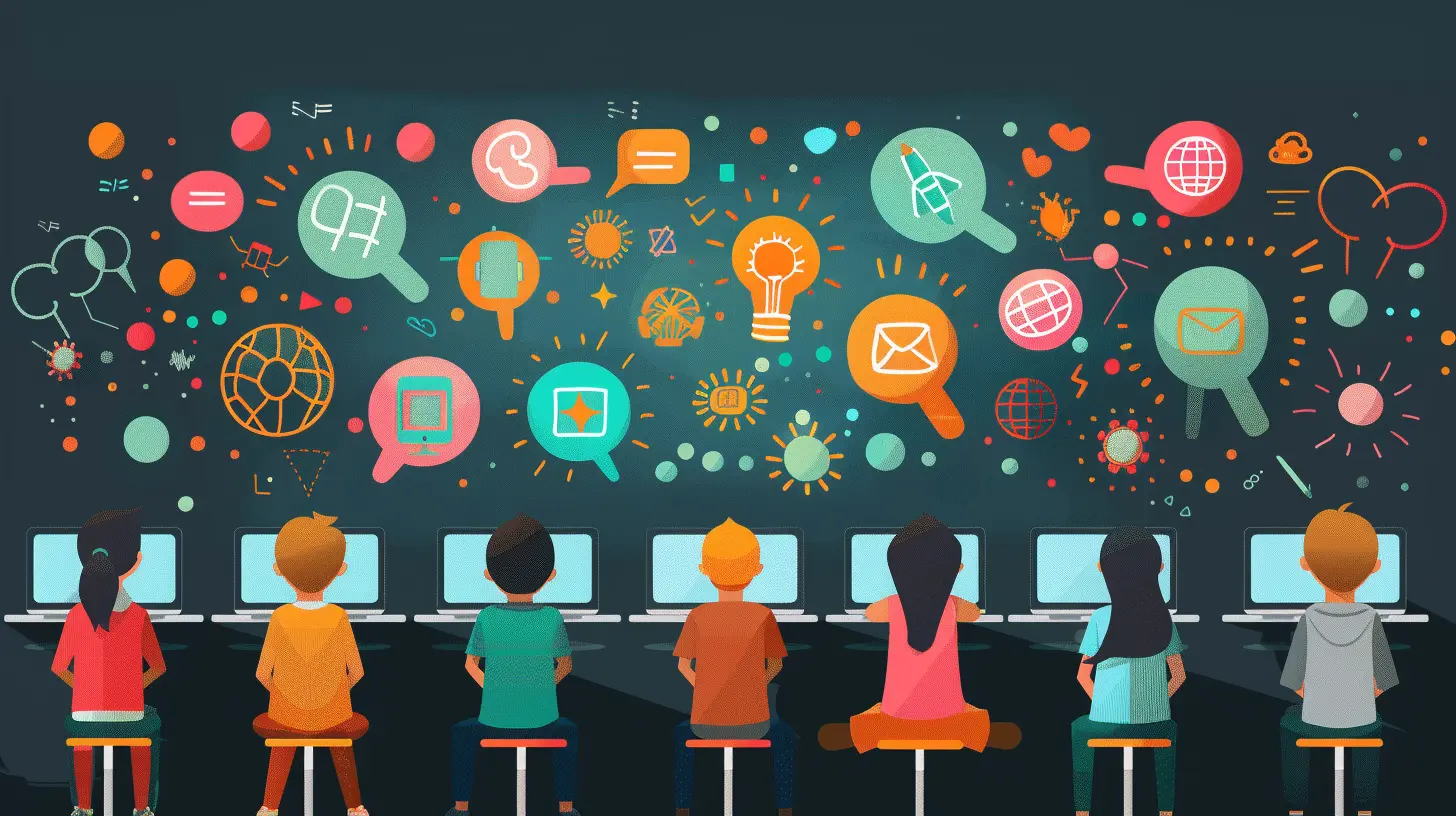Using Social Media to Enhance STEM Learning
29 August 2025
STEM (Science, Technology, Engineering, and Mathematics) education is more important today than ever before. The world runs on technology, and students who grasp STEM concepts early gain a competitive edge in various fields. But let’s be honest—STEM can sometimes feel overwhelming. Complex equations, tough coding languages, and abstract theories can make students disengage quickly.
So, how do we make STEM exciting, relatable, and engaging? Enter social media—the digital playground where students already spend hours scrolling, liking, and sharing. What if we could tap into that interest to boost STEM learning? Well, we can—and it’s more effective than you might think!

The Power of Social Media in Education
Social media isn't just for memes, dance trends, or viral challenges. It has evolved into a massive educational powerhouse. Think about it—students are already using platforms like YouTube, TikTok, Instagram, and Twitter as search engines. They look up everything from “How to solve quadratic equations” to “Beginner Python coding tutorials.”The beauty of social media lies in its ability to break down complex concepts into bite-sized, engaging content. Instead of long, boring lectures, students get:
- Short, visually appealing videos explaining STEM concepts
- Interactive quizzes and polls that reinforce learning
- Live Q&A sessions with educators and STEM influencers
- Collaborative projects that encourage teamwork and problem-solving
But Wait… Isn’t Social Media Full of Distractions?
Absolutely! Social media is filled with distractions, from funny cat videos to endless scrolling. But here’s the key—when used strategically, social media can transform into a powerful learning tool rather than a time-wasting black hole.Instead of banning students from social media, educators and parents can guide them on how to use these platforms productively for STEM learning. It’s all about balance—leveraging the benefits while minimizing the distractions. 
How Different Social Media Platforms Enhance STEM Learning
Not all social media platforms work the same way. Some are perfect for visual learners, while others are great for in-depth discussions or real-time collaboration. Let’s break it down platform by platform.1. YouTube – The Visual Classroom
YouTube is the go-to platform for students looking to understand tricky STEM concepts. Video tutorials simplify complex topics by using animations, real-world examples, and engaging storytelling.How YouTube Boosts STEM Learning:
✅ Step-by-Step Tutorials – From solving calculus problems to building robots✅ STEM Experiments – Hands-on learning demonstrated in real-time
✅ Expert Talks – Insights from scientists, engineers, and tech leaders
_Pro Tip:_ Encourage students to follow reputable STEM channels like Veritasium, Khan Academy, TED-Ed, and CrashCourse for quality content!
2. TikTok – Quick and Engaging Learning Bites
TikTok isn’t just for dance trends! Many educators and STEM enthusiasts now use it to create short, engaging STEM videos. The 60-second format forces content creators to keep it simple and exciting.How TikTok Enhances STEM Learning:
✅ Fast-Paced Micro-Lessons – Bite-sized facts & experiments✅ STEM Challenges & Trends – Encouraging students to participate
✅ Behind-the-Scenes Science – Quick demonstrations of cool scientific phenomena
_Pro Tip:_ Follow accounts like @physicsfun, @chemicalkim, and @engineeringinspiration—they make STEM seriously fun!
3. Instagram – Visual Learning with Infographics
Instagram isn’t just about food pics and travel shots. STEM educators use it to share visually appealing infographics, STEM memes, and carousel posts that break down tough concepts.How Instagram Helps STEM Students:
✅ Infographics & Cheat Sheets – Quick visual summaries of scientific principles✅ STEM Puzzles & Brain Teasers – Fun ways to challenge critical thinking
✅ Student Collaborations – Projects where students share experiments & solutions
_Pro Tip:_ Using hashtags like #STEMlearning, #ScienceIsAwesome, and #WomenInSTEM can help students discover valuable content!
4. Twitter (X) – The Hub for STEM Conversations
Twitter isn’t just for news and celebrity drama—it’s a goldmine for STEM discussions. Students can engage with real scientists, participate in STEM Twitter chats, and stay updated on the latest discoveries.How Twitter Enhances STEM Learning:
✅ Live Q&A Sessions – Ask STEM experts real-time questions✅ Industry Updates – Stay ahead with new advancements in science & tech
✅ STEM Hashtag Threads – Follow discussions like #STEMEducation and #SciComm
_Pro Tip:_ Encourage students to follow pages like @NASA, @MIT, @TEDTalks, and @WomenWhoCode for daily STEM insights.
5. Reddit – Deep Discussions & Problem-Solving
Reddit is like the Wikipedia of interactive learning—students can find detailed explanations, ask questions, and participate in STEM communities.Best STEM Subreddits for Learning:
🔥 r/AskScience – Get expert-verified answers to science questions🔥 r/Physics/MathHelp – Solve math and physics problems collaboratively
🔥 r/EngineeringStudents – Connect with aspiring engineers worldwide
_Pro Tip:_ Encourage students to engage in discussions rather than just lurking—it boosts critical thinking! 
The Benefits of Social Media in STEM Education
So, why should educators and students embrace social media for STEM learning instead of fearing it? Here are some compelling reasons:🎯 Boosts Engagement
Let’s be real—traditional textbooks can be boring. Social media’s videos, GIFs, quizzes, and memes make learning feel fun and interactive.🚀 Bridges the Gap Between Theory & Reality
Students often struggle with why they’re learning something. Social media connects STEM concepts to real-life applications, experiments, and industry trends.🌍 Encourages Collaboration & Networking
STEM isn’t a solo journey. Social media connects students with like-minded peers, industry experts, and mentors from around the world.🎓 Promotes Continuous Learning
Learning shouldn’t stop after school hours. Social media ensures students can pick up new skills anytime, anywhere.
Best Practices: Using Social Media Wisely for STEM Learning
Sure, social media is a fantastic tool—but only when used correctly. Here are some best practices to ensure students get the most out of it without falling into distraction traps:✔️ Follow Credible Accounts – Stick to verified educators, scientists, and institutions.
✔️ Set Learning Goals – Use social media with intent (e.g., “I’ll watch 3 STEM videos instead of aimlessly scrolling”).
✔️ Participate Actively – Engage in challenges, comment on discussions, and ask questions.
✔️ Balance Screen Time – Set time limits to prevent endless scrolling.
✔️ Use Multiple Platforms – Diversify learning (video from YouTube, discussions on Reddit, quick facts on TikTok).
Wrapping It Up
Social media isn’t the enemy of education—it’s a game-changer when used wisely. Instead of fighting it, why not harness its power to make STEM engaging, accessible, and fun? With the right approach, social media can turn complex STEM concepts into something students actually enjoy rather than dread.So, the next time someone says social media is ruining education, remind them—it might just be revolutionizing it instead!
all images in this post were generated using AI tools
Category:
Stem EducationAuthor:

Monica O`Neal
Discussion
rate this article
1 comments
Paris Anderson
This article effectively highlights the potential of social media as a dynamic tool for enhancing STEM learning. By fostering collaboration and engagement among students, educators can harness these platforms to promote creativity, critical thinking, and a deeper understanding of complex concepts.
August 29, 2025 at 12:12 PM

Monica O`Neal
Thank you for your insightful comment! I’m glad you found the article highlights the valuable role of social media in enhancing STEM learning through collaboration and engagement.


